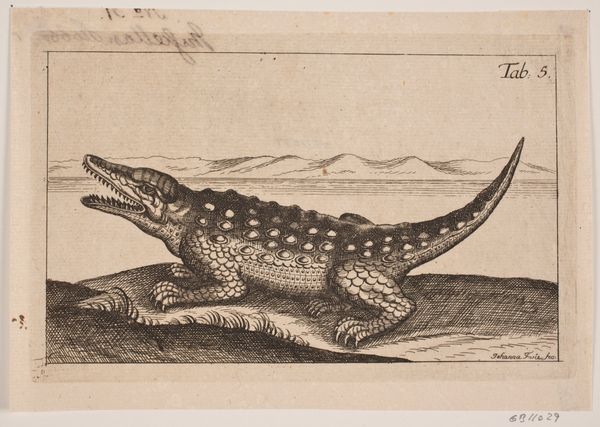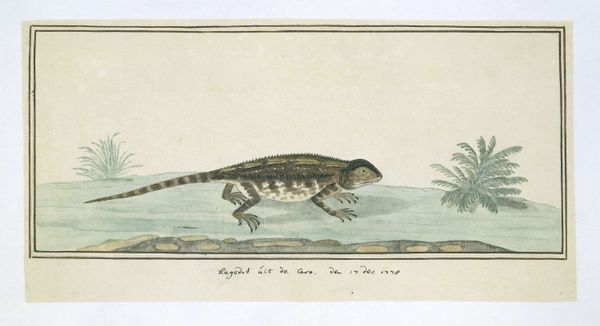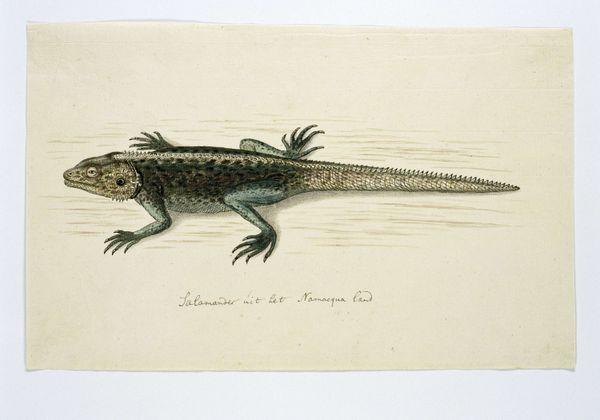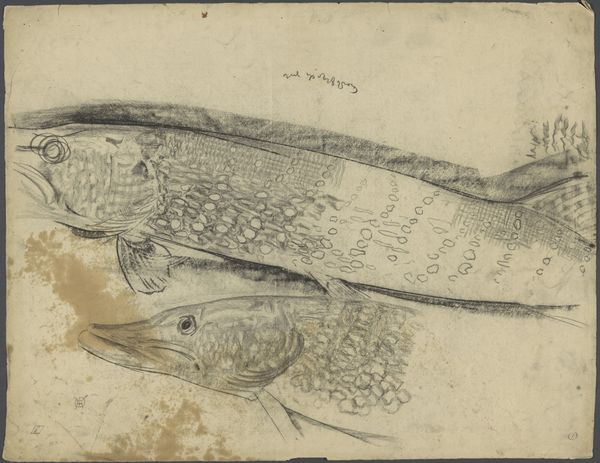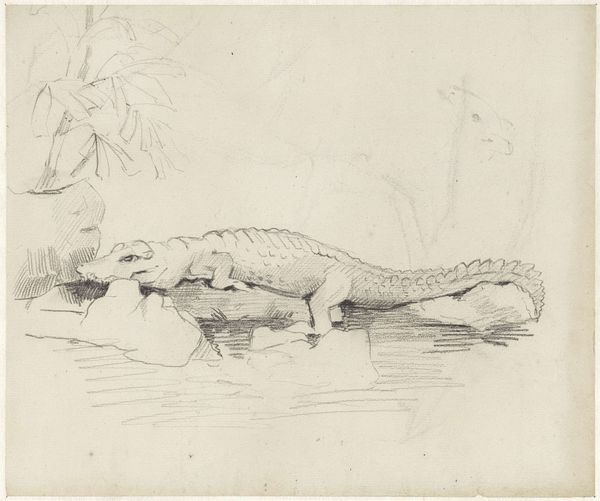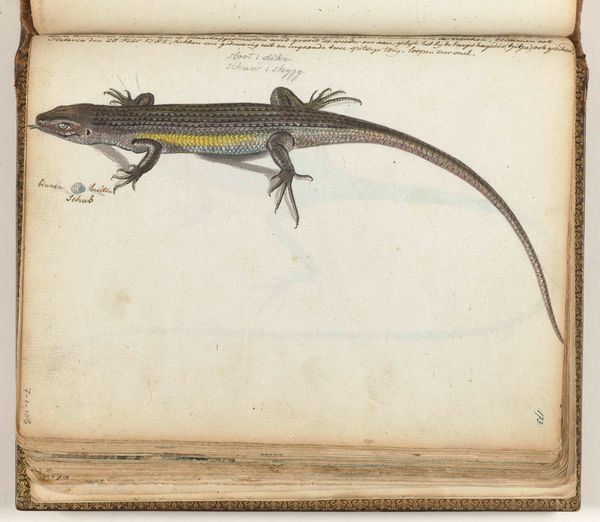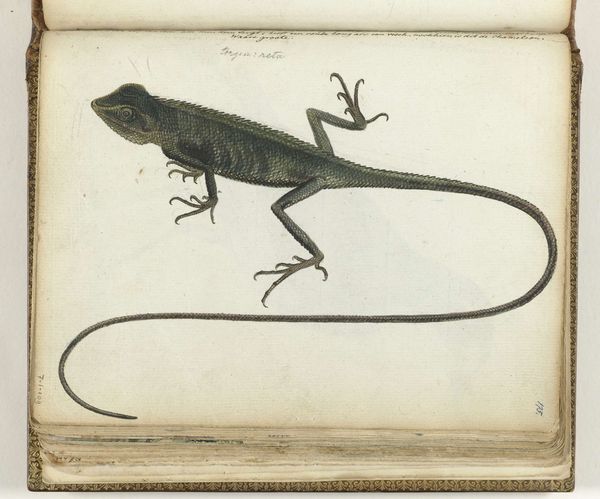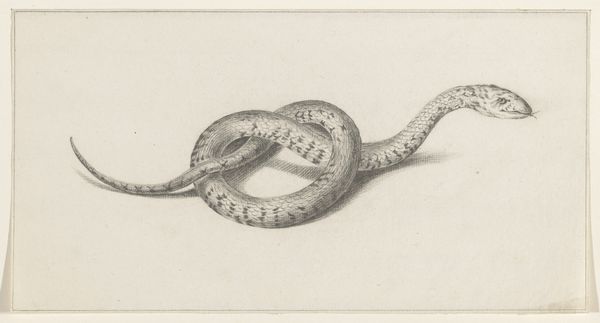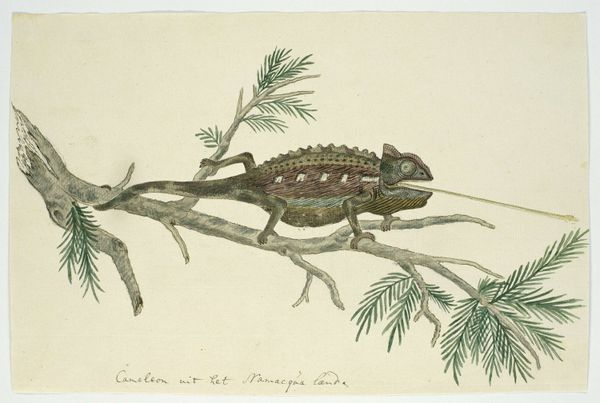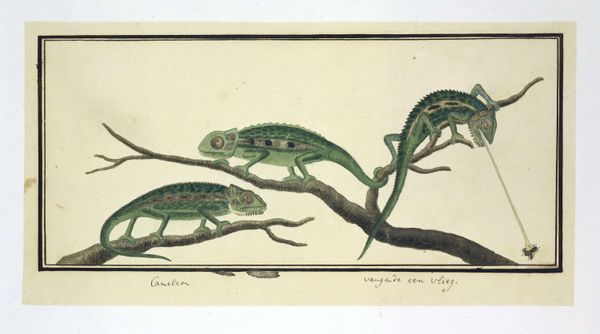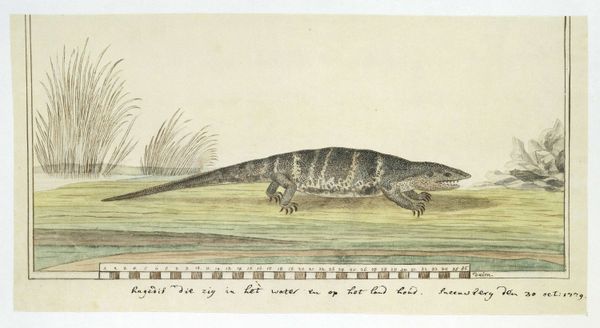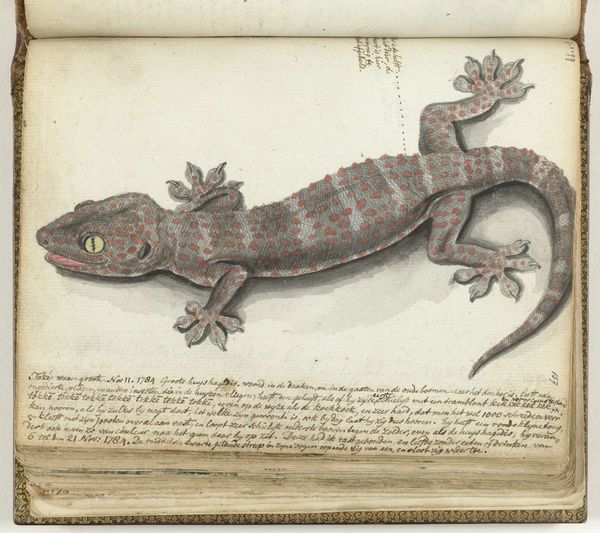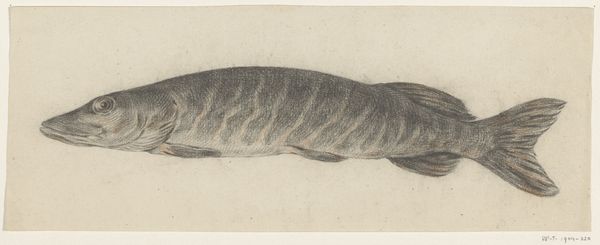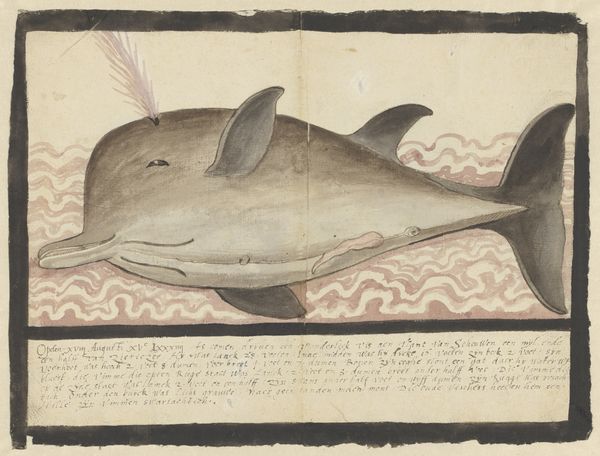
#
toned paper
#
light pencil work
# print
#
pencil sketch
#
possibly oil pastel
#
pencil drawing
#
coloured pencil
#
underpainting
#
pastel chalk drawing
#
watercolour illustration
#
watercolor
Dimensions: sheet (cut within platemark): 14.8 x 24.8 cm (5 13/16 x 9 3/4 in.)
Copyright: National Gallery of Art: CC0 1.0
Editor: Here we have "Lizard," a print made with watercolor, pencil, and chalk by Johann Teyler, sometime between 1685 and 1697. The creature looks so lifelike. How do you interpret this work, especially regarding Teyler's technique? Curator: Look closely at the paper, the laid lines. Consider the economic realities of access to paper in the late 17th century. It's not simply a support, it's a commodity. This drawing uses both watercolor and pencil techniques. Why choose to combine them? What does it tell us about the artist’s intention, his training perhaps, or even his access to specific materials? Editor: That's a fascinating point. The blending of media seems deliberate, a combination of fine detail and subtle wash. Do you think that speaks to a growing market for natural history illustrations at this time? Curator: Precisely! The rising interest in natural history fuelled a demand not only for accuracy but for visually appealing representations. Artists responded with varied approaches to media, often innovating based on the demands and resources at hand. Also, notice the fine labor involved; how does the implied labor of production shape your perception of this natural subject? Editor: I hadn't considered it that way before, seeing the artist's choices reflecting the art market as much as his personal vision. The materials themselves almost tell a story about artistic labor. Curator: Exactly. Consider then what this reveals about the burgeoning scientific methods intersecting with the artistic practice during this period. Every material choice signifies something, from the paper’s texture to the pigments sourced for color. Editor: This has given me a new appreciation for how the materials and methods really drive the interpretation of the artwork. Curator: Indeed. It's through that materiality we discover deeper contexts –social, economic, and artistic – shaping art history.
Comments
No comments
Be the first to comment and join the conversation on the ultimate creative platform.
